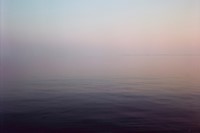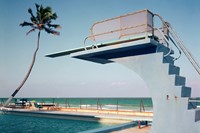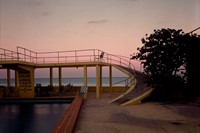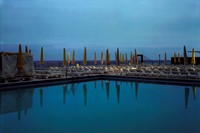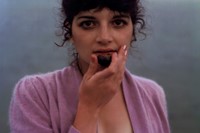As his new exhibition opens at Huxley-Parlour in London, the legendary American photographer talks about his pioneering use of colour photography and the wonder of evening light in the summer
After walking the streets for 15 years with a 35mm camera in hand, Joel Meyerowitz was ready to try something new – so he reached back into the annals of photography and purchased an 8×10 inch Deardorff field camera in 1976. The vintage brass, mahogany and leather camera, first manufactured in the 1920s, required a tripod so that it could remain perfectly still for long exposures lasting anywhere from five seconds to five minutes.
That summer, Meyerowitz brought the camera with him and the family to summer in Cape Cod. The first couple of evenings, he watched as dusk slowly rolled in and realised that the long exposures could capture the fragile, mutable scene as it unfolded before his eyes. “I could make an exposure of the fading daylight, the oncoming darkness, the glow of street lamps, and the lights inside of cottages. All of these light sources were suddenly approachable because the large format camera captures all this detail,” Meyerowitz tells AnOther of that fateful moment on July 2, 1976.
In that moment of clarity, Meyerowitz’s photography practice transformed forevermore. “I discovered this new formula about looking into the darkness and figuring out how to photograph it so that it still feels dark yet has all the information in it that allows us to penetrate that and see the detail,” he says. “I got this jolt of awareness and began to practice that for the rest of my life. It still plays a role in all the other work that I do and [it] pushed me to make riskier photographs about simpler things because I know that the mystery will come along.”
A few years into the series, Meyerowitz and his friend Daniel, a French businessman living in New York and his swim partner on Cape Cod, were looking through the photographs. Daniel described the scene as “entre chien et loup” (“between the dog and the wolf”), the blue hour of twilight when things shift between the known and the unknown – the familiarity of the tame dog to the mystery of the savage wolf. Daniel mentioned how Walt Disney films used this light to craft eerie evening scenes where the trees of the forest seemed to come alive with spirits and ghosts. “That’s the spirit between the dog and the wolf,” he told Meyerowitz.
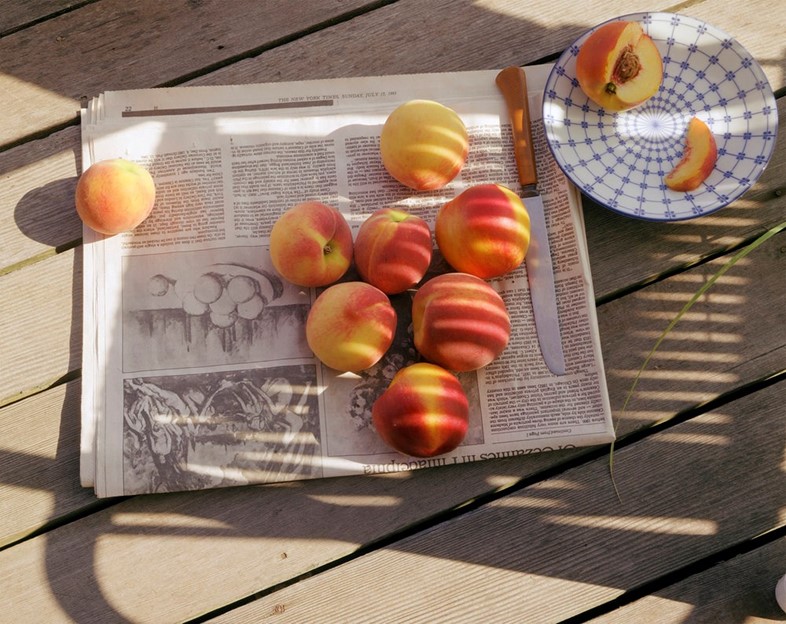
Meyerowitz realised that his photographs made at dusk were also of swimming pools located near the sea, adding another layer of metaphor to the French idiom. Enchanted by this beguiling phrase – which perfectly described the wondrous majesty of these quiet moments of everyday life – Meyerowitz continued forth, crafting mesmerising scenes for Between the Dog and the Wolf, a new exhibition at Huxley-Parlour in London.
The works, originally published as a photo book in 2013, capture the Edenic splendour of modern life as the pools, once alive with the sounds of pleasure, were now perfectly serene. Their smooth surfaces and sleek architecture, perfectly paired with the tender wilderness of the natural world, craft a mood that is at once hypnotic, nostalgic, and hopeful. While people frequently marvel at the vivid colour palettes of the setting sun, Meyerowitz found himself staring into the slowly darkening evening sky, contemplating the wavelengths of light that harmonised, bloomed, and then dissolved while his camera captured it all.
It seems impossible to imagine there was ever a time when colour photography was not regarded as an art form. But for decades, the art world dismissed colour as commercial at best, closing ranks and excluding groundbreaking photographers for years. “When I first started shooting I shot in colour,” Meyerowitz says. “A year later, I started shooting in black and white because I couldn’t print colour in 1962. I only had slides to show people and I noticed they didn’t look at them very long. They treated them like everybody’s travel photos.”

Meyerowitz began printing in colour in 1969, ushering in a new era with his work. By 1976, he was teaching classes at The Cooper Union, educating a new generation of photographers like Mitch Epstein in the art, while also helping to advance the form on an institutional level.
When Meyerowitz returned from Cape Cod, he printed the pictures as 8x10 contacts, and spotted two or three that he thought should be really big. He brought them to the lab and had them make 40-inch prints, which was then a radical move. “In those days nobody was making 40-inch prints; everybody from Garry Winogrand to Diane Arbus was making 11x14 prints,” he says. Inspired, he brought the prints to The Museum of Modern Art. “In those days you didn’t have to make an appointment, you could just walk upstairs – and I went into John Szarkowski’s office. I pinned the print up on the wall and waited for him to get off the phone. He came into the room and looked at these huge prints. They were glowing. John looked at me and said, ‘Why are [they] so big?’ with a pipe in his mouth,” Meyerowitz says.
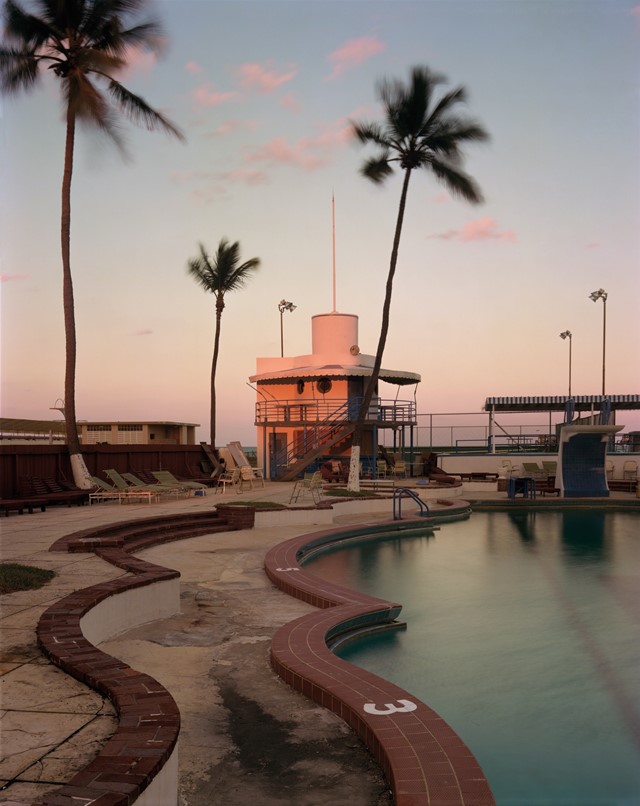
“Like the kid that I was, I said, ‘Because this is 8x10 film.’ I showed him the 8x10 contacts, and he himself had been an 8x10 camera photographer. I said to him, ‘With colour we open up and it becomes a window into the world.” In that moment, Meyerowitz had brought Szarkowski full circle, showing him the ways in which the fabled curator’s guidance had shaped his generation and how he was now pushing the medium into new realms that would set the foundation for decades to come. “With a 40-inch print, it’s almost as if the wall melts away and the space becomes where you are. It’s almost one-to-one in the sense that you are looking out that window into the landscape,” says Meyerowitz.
For Meyerowitz, it all begins with a one-to-one lens, which allows him to stand in the same space as viewers of the photograph. “I would stand at the emotional distance where it felt as if I was embedded in the visual luminosity of the experience,” he says. “It’s as if you have to align all these forces in yourself so that you’re always in the right space at the right time with the right tools. You’re never making a compromise. You’re always making the statement you want to make.”
Joel Meyerowitz: Between the Dog and the Wolf is on view at Huxley-Parlour in London until August 12.

